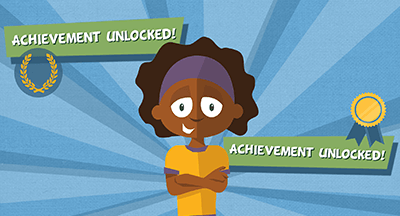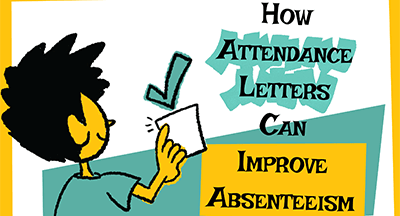
An invaluable contributor to the health of school districts, communication professionals are still emerging as a regular fixture of district admin teams. These are the folks dedicated to telling the story of each school district to the wider community, including but not limited to creating social and other media, managing crisis communication, and building the district’s brand.
National School Public Relations Association (NSPRA) membership is 2,500 strong, but that number represents only a fraction of the 13,500 regular school districts in the United States. More often, admin teams share the “communication professional hat,” so to speak.
Two directors of communication for neighboring K12 school districts recently shared their perspectives, tips, lessons, and stories.
Gregg Gutschow is the communication director for Tomorrow River School District in Amherst, Wisconsin. Sarah O’Donnell is the communication director for Stevens Point Area School District in Stevens Point, Wisconsin.
Storytelling makes communication magical
For Sarah O’Donnell, the role means being a memory keeper for the district. “I think the beauty of any comms job is you can get to be the storyteller for a lot of different things. For us in K12, that means getting to focus on student stories, and teachers’ and staff stories,” O’Donnell explained.“For example, a couple high school kids ran a Toys for Tots drive and delivered donations to the community,” Gregg Gutschow said. “Those kinds of things are magical and important to share with the community at large.” Sometimes these stories are big, exciting moments the community is proud to celebrate, and sometimes communication teams can amplify minor classroom stories. No story is too small to tell, but sometimes it seems like the spectacles get the spotlight more than the classroom-level happenings. “So many things that happen here inside the school are amazing on a daily basis,” Gutschow said.
Overcoming communication challenges
As schools emerge from the chaos of recent years, communication is evolving and growing past simply pushing information from school to home. Instead, K12 communication strategy is back to focusing on reaching a wide audience of alumni, current families, and the community at large. This is beyond exciting, but can spell strain for smaller district teams. Both communication pros solve this by enlisting a troupe of content creators.“Our staff has done a great job of participating—they spot something great, take pictures, come up with a little copy, and send it to social,” Gutschow described. “Tell high school students they can help with content creation. They see things from a different viewpoint than adults do.”
O’Donnell’s teammates across the SPASD district also lend a hand in content creation. “They know our brand, voice, and vision, and what our goals are.”
It’s easy to want to hop into the conversation and engage all the time, but O’Donnell also emphasized the importance of setting boundaries on your time and energy, especially since social media never turns off.
Daily routines for smooth communication
Like many communication professionals, daily routines include checking media and metrics and using tools to track audience engagement. However, as a small team or a department of one, many tasks make the day go by at a breakneck pace. O’Donnell found success using time blocking to focus on a specific task and dive into the strategy.“No two days are alike,” explained Gutschow. “I oversee fundraising, so I may be very focused on that. But I can balance things from day to day or week to week if I have to focus on something else.” Gutschow also checks in daily with his content creators across the district.
Know your audience
Of course, the biggest question in the room is: what does your audience think, and how do you find out?“They think all kinds of things! You find out by asking them,” O’Donnell laughed. “I think so often that people are afraid to ask what people think. They’re nervous about what their answer can be. But they’re going to think it whether you ask or not.”
O’Donnell explained that she uses design thinking for communication. She spends more time defining the problem, the needs, and the perspectives of the audience, then moves on to finding a solution. The district relies on tools like surveys to find gaps in communication.
Over in the Tomorrow River School District, Gutschow explained the grassroots growth of outreach tools including a brand new newsletter, The Falcon’s Nest. “The district Facebook page has grown exponentially,” he added, crediting his internal team of content creators.
“One weird trick” in K12 communication and PR
To quote Gutschow, there’s no set recipe for a K12 communication director. Everyone has their own set of skills and tools that works for their district’s unique goals. But what’s one odd tip that these two PR pros would share?Gutschow stresses the importance of blending in with the crowd when working to capture the story. “Be a discreet spectator with an eye out for something special,” he said. This will help capture the most authentic story—maybe even better than the one you expected.
O’Donnell is a fan of pre-making communications the district will likely never need, but will have ready to go in an instant just in case. “I overplan, probably. I feel more prepared and can tailor my work to what’s happening.”
And there we have K12 communication in a nutshell: careful planning and effervescent storytelling. What stories are waiting to be told in your district?
Big thanks to:
Sarah O’Donnell, Director of Communications
Stevens Point Area School District, Stevens Point, Wis.
#PointProud
Prepare each student to be successful.
Gregg Gutschow, Director of Communications
Tomorrow River School District, Amherst, Wis.
#FalconFamily
Fly like a falcon.
WHAT'S NEXT FOR YOUR EDTECH? The right combo of tools & support retains staff and serves students better. We'd love to help. Visit skyward.com/get-started to learn more.

|
Erin Werra Blogger, Researcher, and Edvocate |
Erin Werra is a content writer and strategist at Skyward’s Advancing K12 blog. Her writing about K12 edtech, data, security, social-emotional learning, and leadership has appeared in THE Journal, District Administration, eSchool News, and more. She enjoys puzzling over details to make K12 edtech info accessible for all. Outside of edtech, she’s waxing poetic about motherhood, personality traits, and self-growth.




